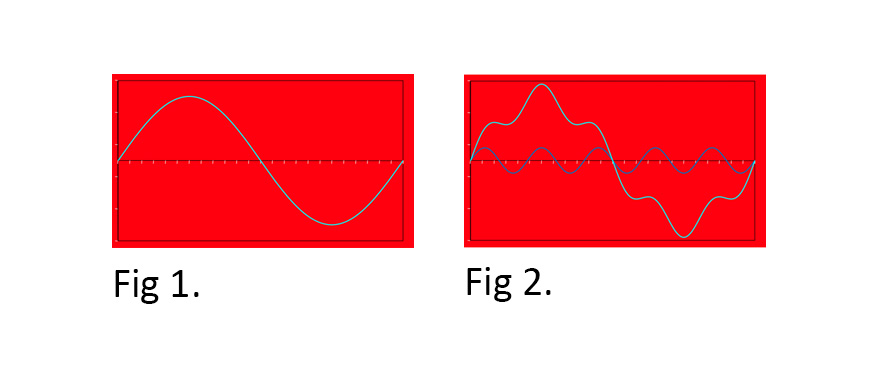What is it Harmonic Distortion and where does it come from?
For this blog article we are delighted to have George Dodwell, ABB Water Framework Manager – South, explain harmonic distortion and where it comes from:
When we look at harmonic distortion (most often known simply as “harmonics”), I feel it’s best to start at the beginning and understand what it is and how it is generated. We will also discuss why harmonics are potentially an issue and why they can cause problems with an electrical system.
Harmonics are a distortion of the sine wave, not to be confused with EMC, harmonics occur at lower frequency orders typically between 100Hz and 3kHz whereas EMC is typically above 150kHz. If we were to look at a sine wave Fig 1 as a true sinewave with harmonics applied this could look something similar to Fig 2.
So, what causes harmonic distortion?
Harmonics are caused by a non-linear load these can be all sorts of things but the most common culprits are EV Chargers, variable speed drives, HVAC systems and Solar PV. There are many more devices that generate harmonics, but the ones listed above are some of the major contributors.
Fundamentally there are two different types of harmonics: Voltage which are the harmonics the DNO (District Network Operator) is concerned about affecting equipment upstream and current harmonics which are more likely to cause a problem on your site. If we look at the standards that apply in the UK, your DNO will require your site to comply with engineering recommendation G5/5 which is a standard that dictates what you are permitted to fit into your site based on a number of criteria.
In terms of the problems harmonics can cause, there is a long list, but some of the main ones are featured below.
When something goes wrong, Harmonics invariably get the blame. Even when they are not the cause of the problem. For example, a common instance is a borehole pump and a level sensor reading wrong… I’ve been to a couple of instances like this and the problem has been the earthing, due to the poor insulation of some borehole pumps but crucially not a harmonic issue.
So how can we solve harmonic distortion?
We look at a value called THDi and THDv (total harmonic distortion current and Voltage) If we were to look at a variable speed drive the THDi would typically be around 30-40% of the full load current, or sometimes higher if, for example, it is a small drive.
To solve this, we have a number of options that we can utilise, depending on several factors such as the severity of the distortion, space limitations and environment. Solutions such as an Active Rectifier Variable Speed Drive (ABB Ultra Low Harmonic offering). Alternatively, the use of a power quality filter to mitigate against any harmonics produced. You can get either an active or passive filter depending on the application requirements, but you will get different levels of harmonic reduction depending on which solution you use. For example, an Ultra Low Harmonic drive would produce less than 3% THDi whereas a passive filter is circa 15% and an active filter would be around the 5% mark.
Ultimately harmonics are a complex topic, and I could write “War and Peace” on it but if you still have unanswered questions get in touch with me or the team at IDS and we will be more than happy to help with any harmonic questions you have.
Still want to know more? Why not book on our dedicated Harmonic online training course.



